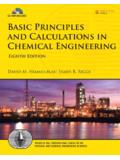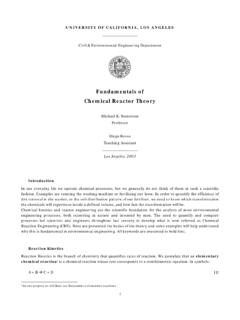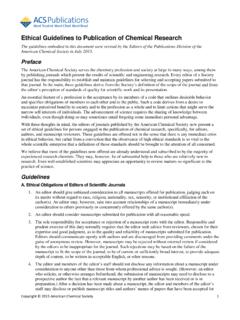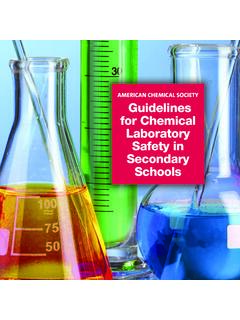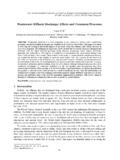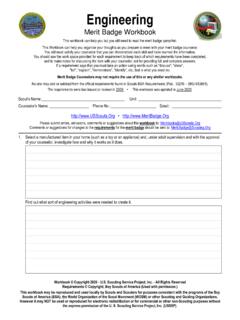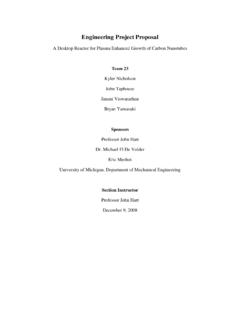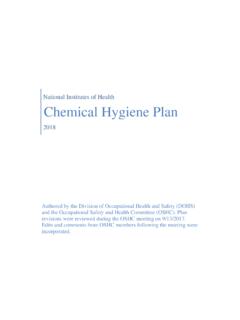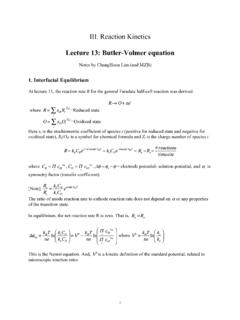Transcription of Engineering Design Guide
1 GuideSingle Wall Piping Double Wall Piping Gas & Air Handling Systems Materials System Design Installation DESIGNGUIDEASAHI/AMERICA, , MassachusettsDisclaimerAsahi/America, Inc. provides this Guide to assist engineers in the Design ofsystems, installers in the installation and owners in the operation. This guideis designed to provide the best possible recommendations known at thetime of printing. Each and every type of piping system is different and no onerecommendation can cover all conditions. This Guide is made available toassist in the Design and installation, but in no way should be construed as awritten recommendation on any system. Each system should be individuallydesigned and installed based on the responsibility and decisions of thepurchaser. This Guide is not a substitute for contacting Asahi/America forspecific recommendations on a system. In addition, Asahi/America is notresponsible for items not appearing in the Guide or recommendations thatmay have changed after the printing of this Guide .
2 It is recommended in eachcase to consult Asahi/America for specific recommendations on each 2013 Asahi/America, Inc. All rights reserved. Printed in THE COMPANYA sahi/America, Inc. a wholly-owned subsidiary of Asahi Organic Chemical, pioneered the market for thermoplastic valves and piping in the United States and Latin America, during a time when there was no viable alternative to metal for piping systems. Asahi/America began by promoting valves from a company known as Asahi Organic Chemical Industry Co., Ltd. (AOC) and piping through AGRU GmbH in Austria. Through distributor and end user education and acceptance, the use of thermoplastics has grown. Asahi/America now manufactures and distributes thermoplastic products including valves, actuators, single and double wall piping systems and specialty components throughout the US and Latin is a diversified ISO9001:2015 certified manufacturer and supplier of corrosion resistant fluid flow products. Headquartered in Lawrence, Massachusetts, where we operate a 220,000 square foot manufacturing and warehouse facility, Asahi/America supports all of our products with a comprehensive selection of in-depth technical documents and product catalogs.
3 To access any of Asahi/America s technical documentation, testing information, or product catalogs, visit the company s web site at or contact Customer Service at makes Asahi/America special is our ability to provide solutions for corrosive or high purity fluid handling systems individualized to meet virtually any customer s need. The Asahi/America technical staff is able to provide superior knowledge of products, applications and installations. Asahi/America is poised to support your next project with the assistance of our large distribution is proud to present this Engineering Design Guide to you. This publication represents over 40 years of experience, talent, and Engineering expertise. It is intended to aid in the process of Engineering , specification, and Design of industrial plastic piping systems using the family of Asahi plastic piping systems. We encourage you to use it often and call upon our staff of piping and valve engineers if there is something we have neglected to cover.
4 This is your Guide to quality plastic system in Fluid HandlingThermoplastics at a GlanceGeneral PropertiesSpecific PropertiesABCDEFGB asic CalculationsSDR - Standard Dimension RatioOperating PressureDangerous Media Operating PressurePermissible Wall ThicknessExternal Pressure CalculationsSystem CalculationsPressure Curve GraphsCreep CurvesVacuum Pressure ChartsAbrasion ResistanceGeneral Chemical ResistanceLeach Out BehaviorSurface RoughnessProduction and PackagingStorage and TransportationGeneral Installation PracticesBendingSocketButt/IRElectrofusi onHot AirMechanical ConnectionsSpecial System ConsiderationsHigh PurityIndustrialDouble ContainedVentilationCompressed AirPurad , PolyPure , PP-Pure Proline , Chem Proline , Ultra Proline Duo-Pro , Chem Prolok , Fluid-Lok PuradVent , ProVent Air-Pro Design &Pressure TestingSingle ContainedDouble ContainedIntroductionMaterialsABCDEFGB asic CalculationsSystem CalculationsGeneral Installation PracticesSpecial System ConsiderationsDesign & Pressure TestingAAppendix A - System TablesBAppendix B - General Engineering TablesCAppendix C - Conversion Box 653 35 Green Street, Malden, MA 02148 Tel: (800) 343-3618, (781) 321-5409 Fax: (800) 426-7058 Internet: Email: AINTRODUCTIONC ontentsPlastics in Fluid Handling.
5 A-2 Thermoplastics at a Glance ..A-3 ASAHI/AMERICARev. Box 653 35 Green Street, Malden, MA 02148 Tel: (800) 343-3618, (781) 321-5409 Fax: (800) 426-7058 Internet: Email: IN FLUID HANDLINGP lastic piping systems are offered in a wide assortment of materials and sizes. Each material has unique and specific mechanical properties. These diverse properties allow plastic to become the preferred system for many applications that range from the transport of aggressive chemicals to the distribution of ultra pure water. Because each material has its own unique properties, understanding them becomes vital to the successful Design , installation, and operation of a system. Asahi/America is proud to present this Design Guide to assist Design engineers and system installers with the proper Engineering , layout, and installation of plastic systems. Asahi/America is a pioneer in the manufacture and distribution of plastic systems in the United States. Since the 1970 s, we have dedicated ourselves to assisting our customers in achieving the maximum benefits plastic systems offer.
6 Designing a system made of thermoplastic materials differs considerably from that of metallic materials. No one understands this as well as Asahi/America s sales and technical staff. Our trained staff is available to assist with all aspects of plastic piping systems. The information contained herein is designed to minimize the efforts of engineers, designers, contractors, and research professionals in sizing and selecting all aspects of fluid Plastic BenefitFor pipe, fittings, and valves, thermoplastic materials offer superior corrosion resistance, lighter weight, simple installation, and a more cost-effective ResistancePlastics are non-conductive and are therefore immune to galvanic or electrolytic erosion. Because plastics are corrosion resistant, pipe can be buried in acidic, alkaline, wet or dry soils without requiring a protective coating. In addition, cathodic protection devices are not CompatibilityImpervious to many chemicals, thermoplastics are gaining an ever-increasing acceptance and preference in a large variety of applications.
7 Additionally, the variety of materials available allow a wide range of chemical solutions to be handled successfully with plastic ConductanceAll plastic piping materials have low thermal conductance properties. This feature maintains more uniform temperatures when transporting fluids in plastic AINTRODUCTIONPLASTICS IN FLUID HANDLING than in metal piping. Low thermal conductivity of the plastic piping wall may eliminate or greatly reduce the need for pipe insulation to control Friction LossBecause the interior surface of plastic piping is generally very smooth, less power may be required to transmit fluids compared to other piping systems. Furthermore, the excellent corrosion resistance of plastics means that the low friction loss characteristic will not change over PerformanceDue to the relative chemical inertness and the minimal effects of internal and external corrosion, there is very little change in plastic piping s physical characteristics over the decades. Examinations of pipe samples taken from some systems have shown no measurable degradation after 25 years of use.
8 In most cases, Asahi/America pipe systems are designed for 50 years of WeightMany plastic piping systems are about one-sixth the weight of steel piping. This lends to lower costs in many ways: lower freight charges, less manpower, simpler hoisting and rigging equipment, etc. This characteristic has allowed unique, cost-effective installation procedures in several of Joining MethodsPlastic piping can be joined by numerous methods. Each material has several different joining methods. The following list incorporates some of the most common: Solvent cementing Socket fusion Butt fusion Non-contact IR fusion Threaded joints Flanges O-rings Rolled grooves Mechanical compression jointsThe various joining methods allow plastic piping to be easily adapted to most field Box 653 35 Green Street, Malden, MA 02148 Tel: (800) 343-3618, (781) 321-5409 Fax: (800) 426-7058 Internet: Email: piping systems have been approved for potable water applications, and certain systems are recognized by the FDA as appropriate material to be in contact with food stuff.
9 As evidence, all plastic potable water-piping materials and products are tested and listed for compliance to ANSI/NSF Standard 61. All ASTM and AWWA standards for plastic pressure piping that could be used for potable water contain a provision whereby the regulatory authority or user can require product that has been tested and found to be in conformance with ANSI/NSF Standard 61 Drinking Water System Components Health Effects. When plastic pipe or fittings are ANSI/NSF Standard 14 listed, and have the NSF-pw (potable water) mark, they also meet the ANSI/NSF Standard 61 requirements. The NSF-pw mark certifies to installers, users, and regulators that the product meets the requirements of ANSI/NSF Standard 14 for performance and the ANSI/NSF Standard 61 for health effects. Biological ResistanceTo date, there are no documented reports of any fungi, bacteria, or termite attacks on any plastic piping system. In fact, because of its inertness, plastic piping is the preferred material in deionized and other high purity water ResistancePlastic piping materials provide excellent service in handling slurries such as fly ash, bottom ash, and other abrasive solutions.
10 The material toughness and the smooth inner-bore of plastic piping make it ideal for applications where abrasion resistance is MaintenanceA properly designed and installed plastic piping system requires very little maintenance because there is no rust, pitting, or scaling to contend with. The interior and exterior piping surfaces are not subject to galvanic corrosion or electrolysis. In buried applications, the plastic piping is not generally affected by chemically aggressive AT A GLANCEPVC (Polyvinyl Chloride). Asahi/America uses an unplasticized PVC polymer in all of its PVC valves. PVC has excellent chemical resistance, strength, and rigidity. It resists attack from most acids and strong alkalies, as well as gasoline, kerosene, aliphatic alcohols and AINTRODUCTIONTHERMOPLASTICS AT A GLANCE hydrocarbons, and salt solutions. Aromatic, chlorinated organic compounds and lacquer solvents do affect PVC chemical properties. Its low cost and overall property balance make PVC material best suited to the widest number of corrosive applications.


